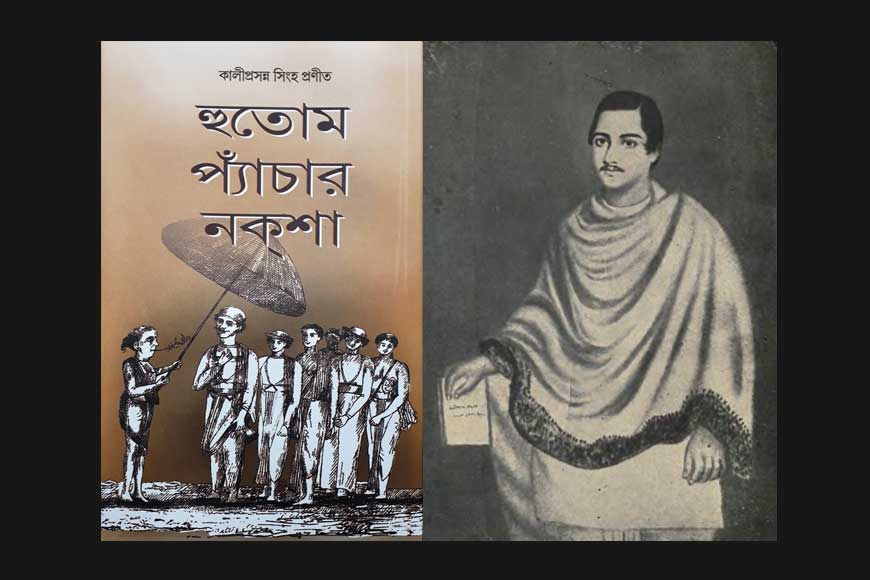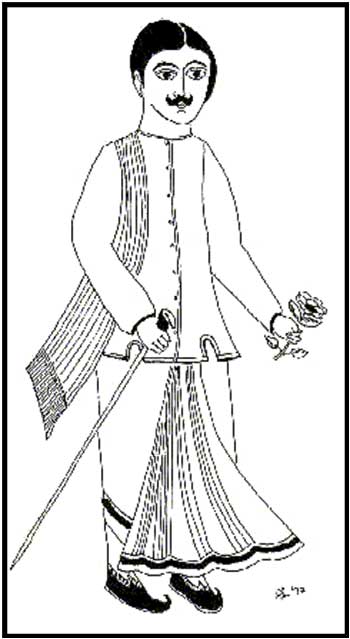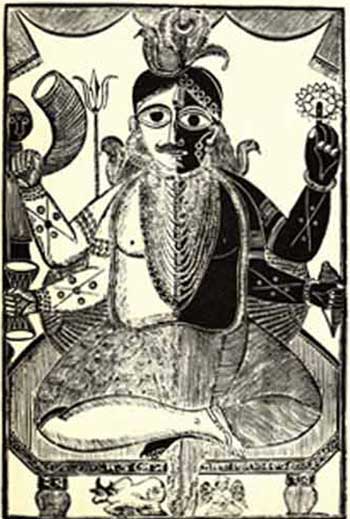Vignettes of erstwhile Kolkata from Hutom Pyanchar Naksha

 In the 19th-century, Kolkata was gradually emerging as a city from three non-descript villages. The British colonial rulers were keen to transform this newly-found city along the lines of London and establish it as their Capital of the East. The river Ganga became the lifeline for Calcutta, similar to the Thames for London. On the fringes of the city were miles and miles of villages and rivulets. The city was brimming with people who congregated in search of new scopes and opportunities.
In the 19th-century, Kolkata was gradually emerging as a city from three non-descript villages. The British colonial rulers were keen to transform this newly-found city along the lines of London and establish it as their Capital of the East. The river Ganga became the lifeline for Calcutta, similar to the Thames for London. On the fringes of the city were miles and miles of villages and rivulets. The city was brimming with people who congregated in search of new scopes and opportunities.
Hutom Pyanchar Naksha (Sketches by a Watching Owl) published in 1862 and written by Kaliprasanna Singha (1840 - 1870), was a book that reflected the tension that arose within the Bengali society, especially in Calcutta during this epoch-creating time. Those were the times of a chaotic merger of too many eras; old and new, ever-changing, yet custom bound. Other factors including the Sepoy Mutiny, exile of Nawab Wajid Ali Shah, the 10th and last Nawab of Awadh, the Indigo revolt, rise in conversions to Christianity, the emergence of Brahma Samaj and the ideologies of social reform adopted by social reformers added to the confusion and mayhem.
In the early 1800’s when the British regime became a reality, Calcutta saw the emergence of zamindars and a new urban professional class. The culture of subordination of a subject race was giving way to the assertion of a new state of mind. Hutom Pyanchar Naksha gives expression to these changes, conveying with irony and bawdy humor how the old and the new coexist in Calcutta. Singha’s invaluable contribution to the growth of Bengali literature is not restricted to just Hutom Pyanchar Naksha alone, which has always occupied a distinctive place in Bengali literature as it continues to be read for its clever sketches of people and places in the city, for its use of the lively, raw colloquial language once spoken in the city. One of the torchbearers of Bengali literature, Singha is most remembered for the translation of the great epic, Mahabharata to Bengali.
 Singha was a multi-faceted personality -- author, editor, publisher, philanthropist, social worker and great patron of art, literature and culture. He edited and published several renowned magazines of the time. He was a prodigy born on February 23, 1840 in the renowned Singha family of North Kolkata. From his childhood he was a brilliant student who mastered both English and Sanskrit effortlessly. At the age of 13, he established the Vidyotsahini Sabha, a society to discuss significant issues of the day. Later, he entered the cultural milieu of Kolkata through Vidyotsahini Patrika, established in 1855, a periodical, and Vidyotsahini Theatre, established in 1856. He edited magazines such as Sarbatattva Prakashika (which dealt with zoology, geology, the arts and literature), Bibidartha Sangraha, Paridarshak, etc. When the British government slapped a fine of Rs.1000 on Reverend James Long for translating Dinabandhu Mitra’s play Neel-Darpan, young Singha came to the priest’s aid and paid the fine on behalf of Rev. Long. He also supported Harish Mukherjee, editor of Hindu Patriot in many ways.
Singha was a multi-faceted personality -- author, editor, publisher, philanthropist, social worker and great patron of art, literature and culture. He edited and published several renowned magazines of the time. He was a prodigy born on February 23, 1840 in the renowned Singha family of North Kolkata. From his childhood he was a brilliant student who mastered both English and Sanskrit effortlessly. At the age of 13, he established the Vidyotsahini Sabha, a society to discuss significant issues of the day. Later, he entered the cultural milieu of Kolkata through Vidyotsahini Patrika, established in 1855, a periodical, and Vidyotsahini Theatre, established in 1856. He edited magazines such as Sarbatattva Prakashika (which dealt with zoology, geology, the arts and literature), Bibidartha Sangraha, Paridarshak, etc. When the British government slapped a fine of Rs.1000 on Reverend James Long for translating Dinabandhu Mitra’s play Neel-Darpan, young Singha came to the priest’s aid and paid the fine on behalf of Rev. Long. He also supported Harish Mukherjee, editor of Hindu Patriot in many ways.
His plays include Babu (1854), Vikramorbashi (1857), Savitri-Satyaban (1858) and Malati-Madhab (1859). He advocated widow remarriage and offered awards to promote widow remarriage. Kaliprasanna was appointed an Honorary Magistrate and Justice of Peace. He also served as the Chief Presidency Magistrate of Calcutta for a short period. He died at the young age of 30 on July 24, 1870. Bengal lost one of its prodigious sons, a multi-faceted talent prematurely.









